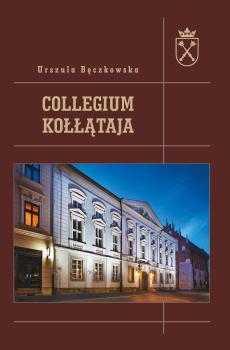Collegium Kołłątaja
Synopsis
The building of Collegium Kołłątaja (formerly known as Collegium Physicum) at Św. Anny 6 and Gołębia 9, seems notable not only as one of the best examples of classicist architecture in Krakow, but above all, as an important witness to the history of Polish science. From the very beginning, its history was coupled with the Enlightenment attempts by the National Education Commission to reform the Academy of Krakow, which were part of a great project to modernize the country hit by the trauma of the first partition. In the remedial project developed by Hugo Kołłątaj, the change of curricula and teaching methods was accompanied by a trans- formation of the organizational structure of the university. In place of the existing faculties, schools were established, which were grouped into two colleges: the Moral College (covering law, theology and literature) and the College of Physics (combining faculties of a mathematical and natural science profile). At the same time, it was decided to build a new seat for the College of Physics, as the slim and archaic building of the university was not able to accommodate modern laboratories and offices with exhi- bits intended to make the teaching process practical. The building was to be constructed on the foundation of the unfinished boarding school of the Kraków Academy funded by the rector, Fr. Kazimierz Pałaszowski, “for the wealthy nobility”, on the site of three older tenement houses (Priamowska, Arnłaowska, Pod Konikiem), acquired by the university in the years 1749-1758.
Chapters
-
TABLE OF CONTENTS
-
Słowo od redaktora .......... 7
-
Wprowadzenie historyka .......... 11
-
Od autorki .......... 27
-
Wstęp .......... 29
-
Reforma Hugona Kołłątaja .......... 33
-
Początki siedziby Kolegium Fizycznego .......... 37
-
Powiększenie i modyfikacja budynku: 1787-1791 .......... 45
-
Dalsze przebudowy gmachu: 1803-1806 - 1809-1812 .......... 53
-
Kolegium Fizyczne w czasach Wolnego Miasta Krakowa .......... 59
-
Modernizacja i rozbudowa gmachu w latach 50. XIX wieku .......... 77
-
Czasy autonomii galicyjskiej .......... 91
-
Kolegium Fizyczne w okresie międzywojennym .......... 119
-
Dzieje budynku po II wojnie światowej .......... 131
-
Zakończenie .......... 139
-
Słowniczek terminów architektonicznych .......... 141
-
Wykorzystane źródła i literatura przedmiotu .......... 143





